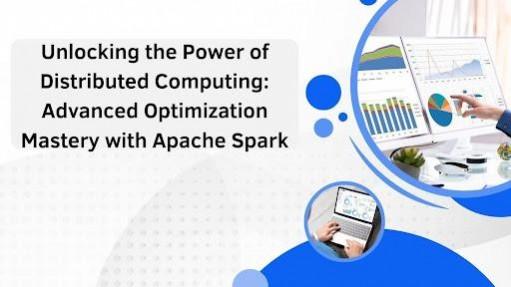
In today's rapidly evolving data landscape, mastering distributed computing systems is no longer optional it's essential. Quang Hai Khuat, a leading researcher and data engineering expert, offers a comprehensive exploration into optimizing Apache Spark architecture, providing invaluable insights for data professionals. This article captures the core principles of advanced optimization mastery, shedding light on transformative strategies that empower scalable and efficient data processing.
Building a Resilient Backbone: Spark's Architectural Mastery
Apache Spark's architecture, built on a driver, cluster manager, and executors, enables powerful distributed computing. The driver creates a DAG to manage computation, while cluster managers allocate resources and executors execute tasks. This design ensures high parallelism, scalability, and fault tolerance, making Spark resilient and efficient for large-scale data processing.
Core Concepts Driving Efficiency
The magic of Spark lies not just in its structure but in its conceptual framework. Concepts like Resilient Distributed Datasets (RDDs), lazy evaluation, and partitioned data processing underpin Spark's ability to handle massive datasets. Techniques such as transformations and actions guide data flows, while features like broadcast variables and accumulators minimize overhead and streamline computations. Understanding these concepts allows engineers to optimize data workflows intuitively and methodically.
Precision Resource Management: The Heart of Optimization
Optimizing resource allocation boosts Spark's efficiency. Tuning memory settings, using Kryo serialization, and enabling dynamic resource allocation and speculative execution enhance responsiveness and cost-efficiency. Careful configuration balances resource usage and performance, significantly reducing execution times and maximizing overall productivity.
Enhancing Data Locality: Bringing Computation Closer
Data locality is crucial in distributed environments, and Spark excels by prioritizing node-local execution whenever possible. By adopting strategies such as intelligent data partitioning, caching, and using broadcast variables, Spark minimizes the costly network transfers that can throttle performance. Enhancing locality not only boosts execution speed but also optimizes resource utilization and scalability, enabling faster insights from massive datasets.
Building Fault-Tolerant Pipelines
Robustness is another pillar of Spark's design. Through mechanisms like lineage graphs, checkpointing, and speculative execution, Spark ensures that data processing workflows can recover gracefully from failures. However, fault tolerance comes with trade-offs, such as increased memory and storage overhead, making it critical to fine-tune these settings to strike the right balance between reliability and performance.
Mastering Monitoring with Spark Web UI
Continuous monitoring is essential to achieve sustained optimization. The Spark Web UI provides real-time insights into job performance, task distribution, memory usage, and shuffle operations. Identifying bottlenecks, such as data skew or resource contention, allows engineers to proactively adjust configurations, improve task parallelism, and enhance overall application efficiency. Regular monitoring transforms optimization from a one-time task into an ongoing strategic advantage.
Advanced Techniques for Elevated Performance
For those ready to push Spark even further, advanced strategies offer significant benefits. Memory management improvements, such as off-heap storage and dynamic memory fractions, minimize garbage collection overhead. Smart shuffle optimizations, including reduced partitioning and the use of broadcast joins, streamline data movements. Meanwhile, Spark SQL tuning techniques like cost-based optimization and adaptive query execution unlock faster and more efficient analytical querying capabilities.
Staying Future-Ready in a Dynamic Ecosystem
As Spark evolves, so must the professionals who use it. Emerging trends include greater integration with Kubernetes, serverless Spark models, and enhanced Python APIs. Embracing continuous learning, cross-disciplinary knowledge, and DataOps practices ensures that data engineers remain at the forefront of innovation, capable of building solutions that are both cutting-edge and resilient.
In conclusion, Quang Hai Khuat's insights provide a vital roadmap for navigating the complexities of modern data engineering. As Spark's ecosystem continues to expand and integrate with cloud-native technologies, the principles and techniques he outlines offer a lasting foundation for success in the world of big data.








